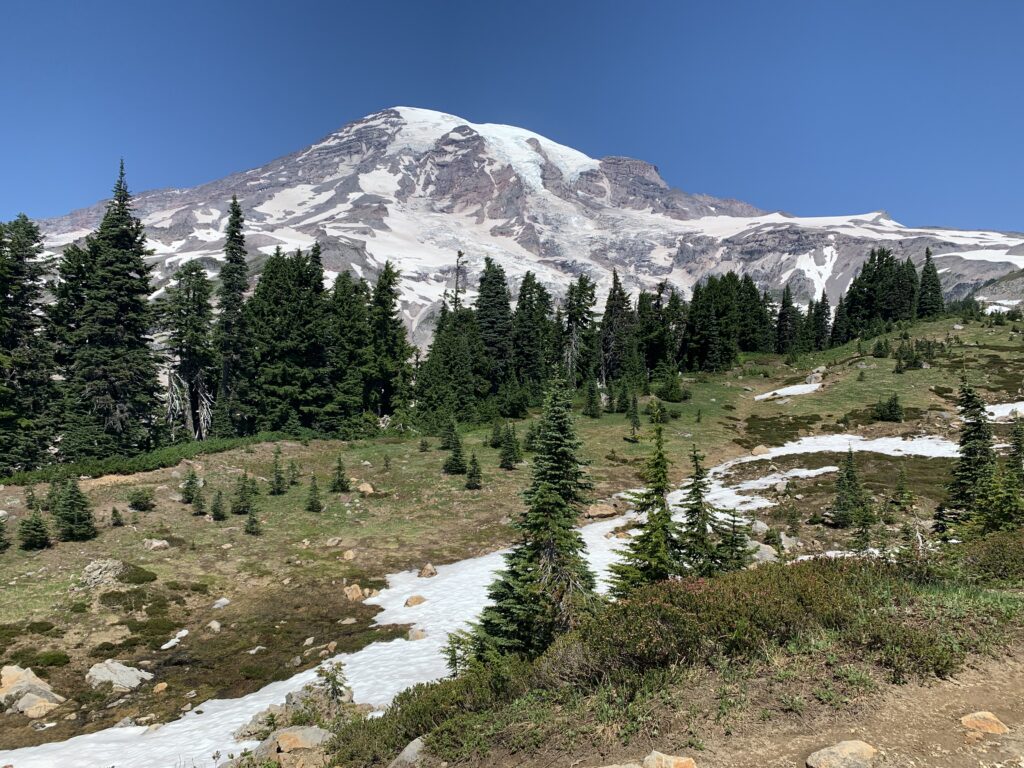
We went to Mt Rainier this August. We had a wonderful time, especially since we stayed at Stone Creek Lodge a very comfortable set of cabins, with a hot tub, outdoor grill and extremely agreeable hosts. We saw the wild flower meadows, the rushing waterfalls, the deep old growth woods, and some wildlife. When we got back I have been reading the excellent book TAHOMA AND ITS PEOPLE A Natural History of Mount Rainier National Park by Jeff Antonelis-Lapp. Then I understood what I had been seeing beyond just enjoying its beauty.
It is easy to see in this photograph that there is not a lot of snow on the mountain. According to Tahoma and its People, there are more than 24 different glaciers on Mt Rainier! Most of us thought it was just one big white glacier. But if you look at the photograph above on the ascent to Paradise and then look at the diagram, you can see where the Paradise Glacier is descending toward the Nisqually River. Clearly it is not going as far now as it is in the drawing. The glaciers on Mt Rainier cover 30 square miles. and “account for 25 per cent of th total ice in the conterminous United States” ! ( p 23 Tahoma). But the big issue is what is happening to them with climate chane: “Based on the most up to date mapping, all of Mount Rainier’s glaciers are at their historic minimums. All of the glacial terminus positions are at the highest recorded elevations since record keeping began,” according to Paul Kennard, recently retired fluvial geomorphologist at Mt Rainier. He has been tracking the glaciers loss for decades, and refers to Mt Rainier as the canary in the coal mine. The loss of ice is rapidly accelerating.
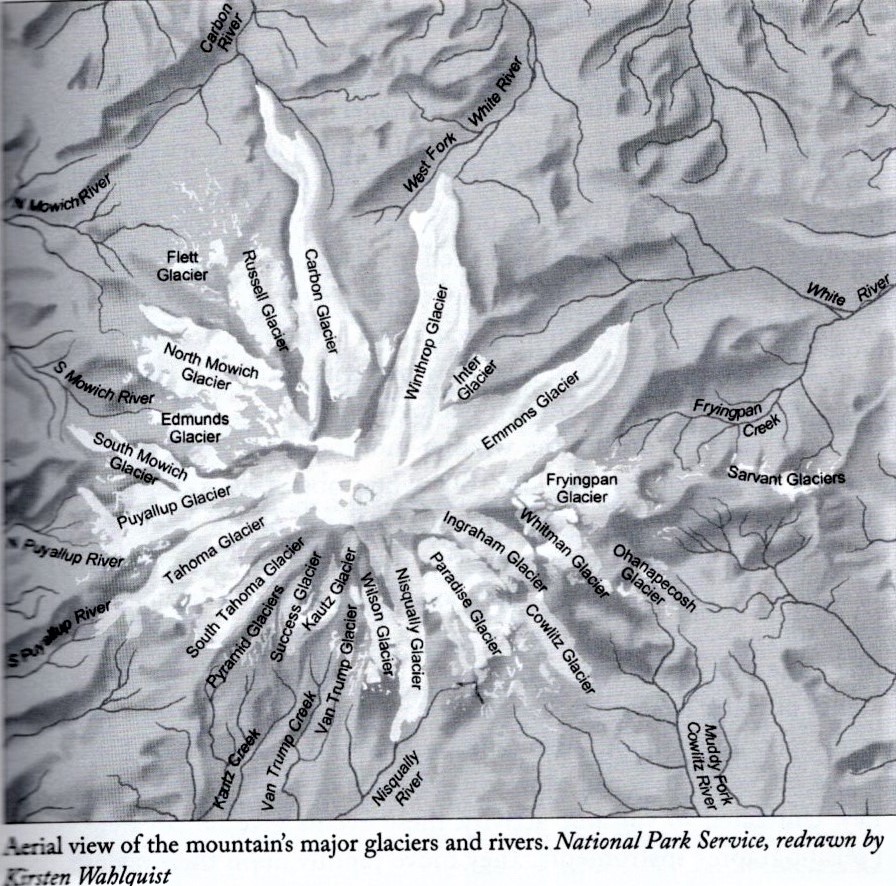
The next topic is the Nisqually River. We observed that there were strange living trees in the midst of the river channel, that was vastly wider than where the water was flowing.
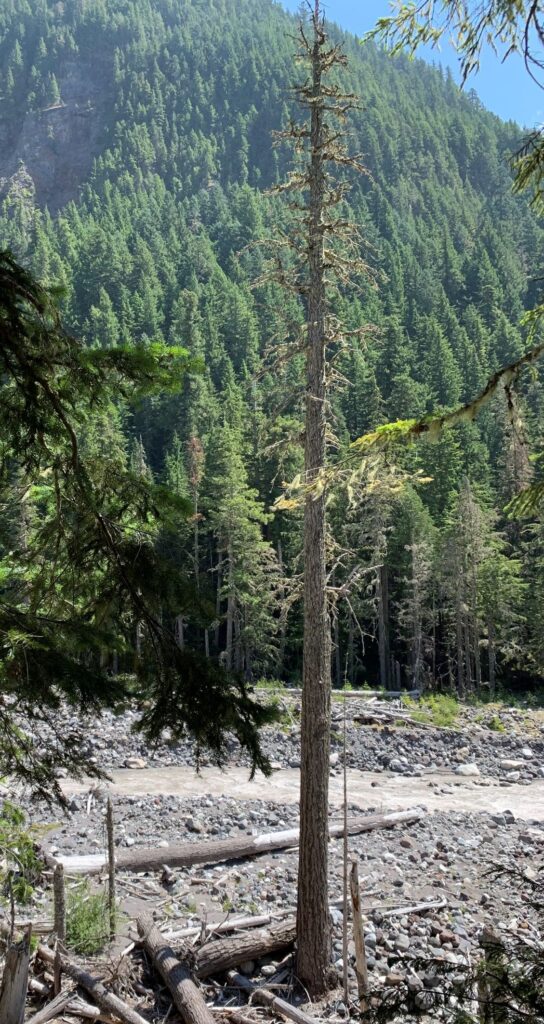
Outburst floods are enormous debris flows that move huge amounts of water carrying trees, rocks, and gravel down into the rivers. This leads to the kind of standing dead tree that you see in this picture. If there is too much sediment in the river, it loses oxygen and leads to the death of fish as well as plants and animals. Lots of sediment stays in the channel.
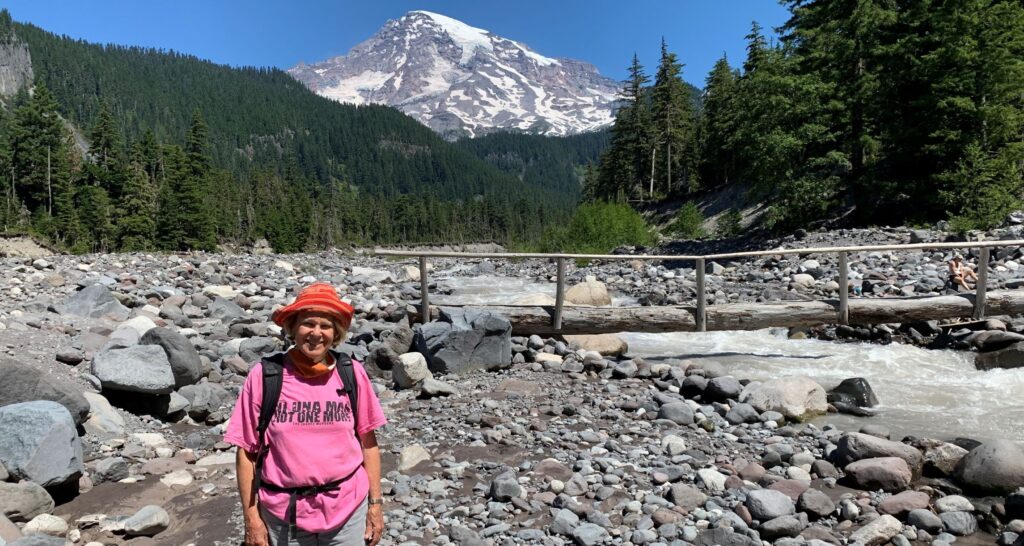
We observed a huge dike built up next to the river just West of here near Longmire and beyond, and now we know why, it is to protect people, forests and wildlife from the inevitable debris flows here. At the same time, we heard that there had been much more rain this last winter, that led to groundwater flooding, as well as mosquitoes, that had never been there before.
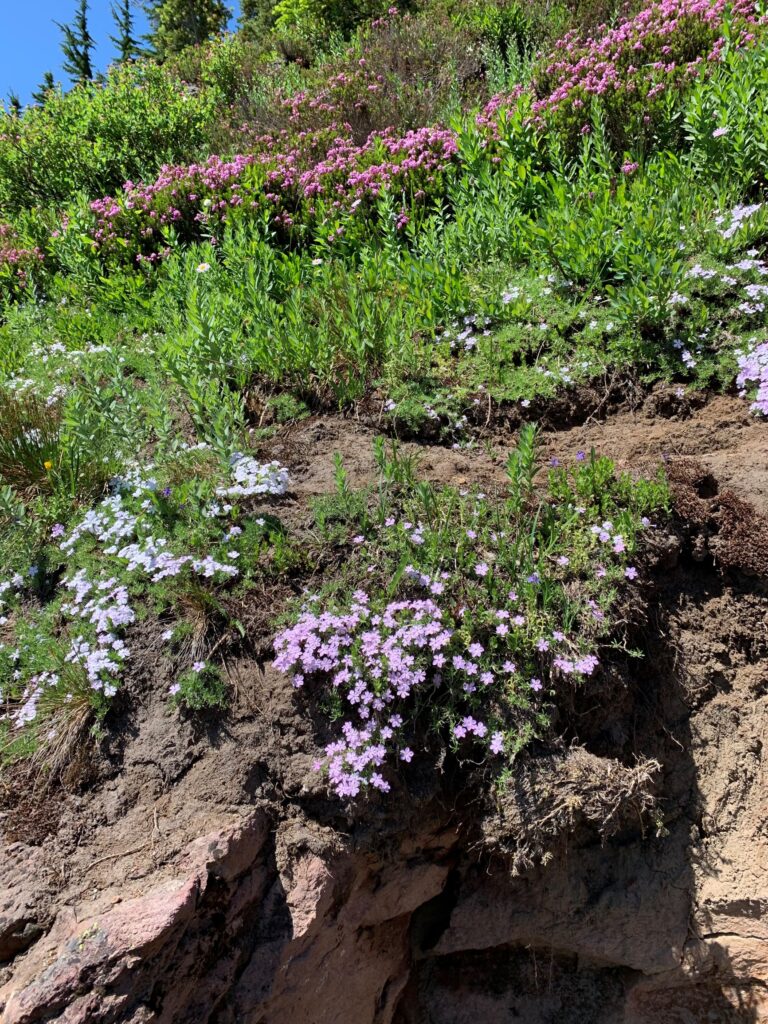
And then there are the famous Rainier wildflowers. We identified at least ten when we were there, although hard to identify from our photographs. Here probably penstemon and phlox, but we also saw avalanche lilies, heather, daisies, asters, arnica, paintbrush, and more. Again, these seemingly natural outbursts are made to happen by careful clearing of the meadows. Also with climate change they may come much earlier in the summer ( usually seen in August), and harder to visit.
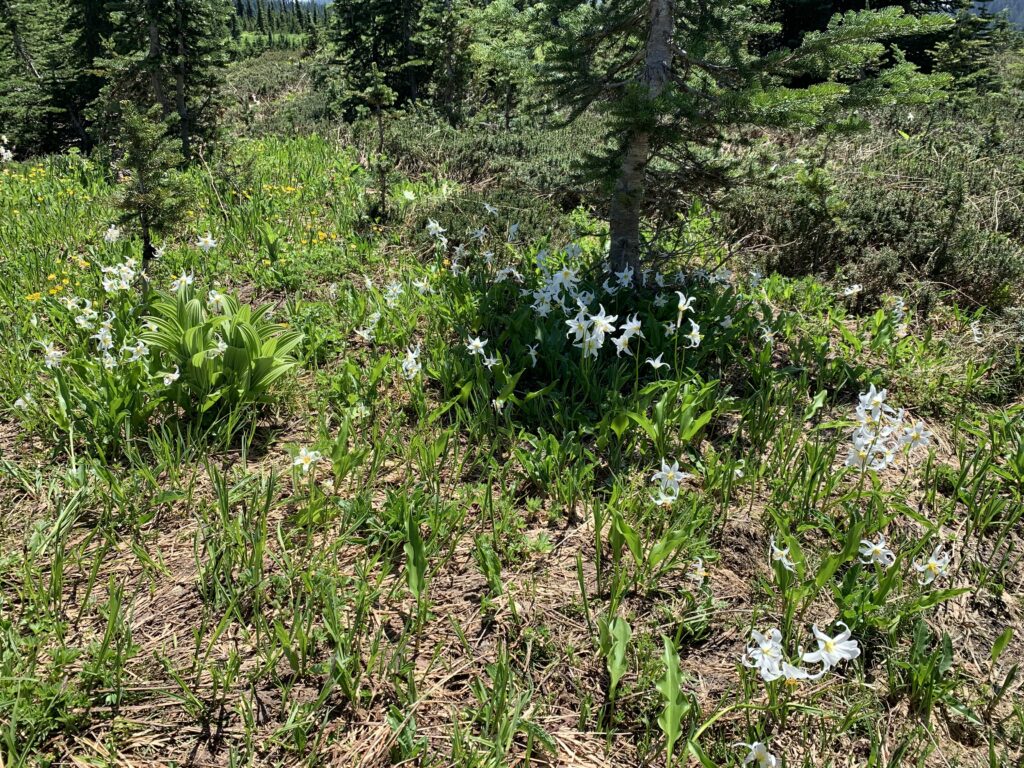
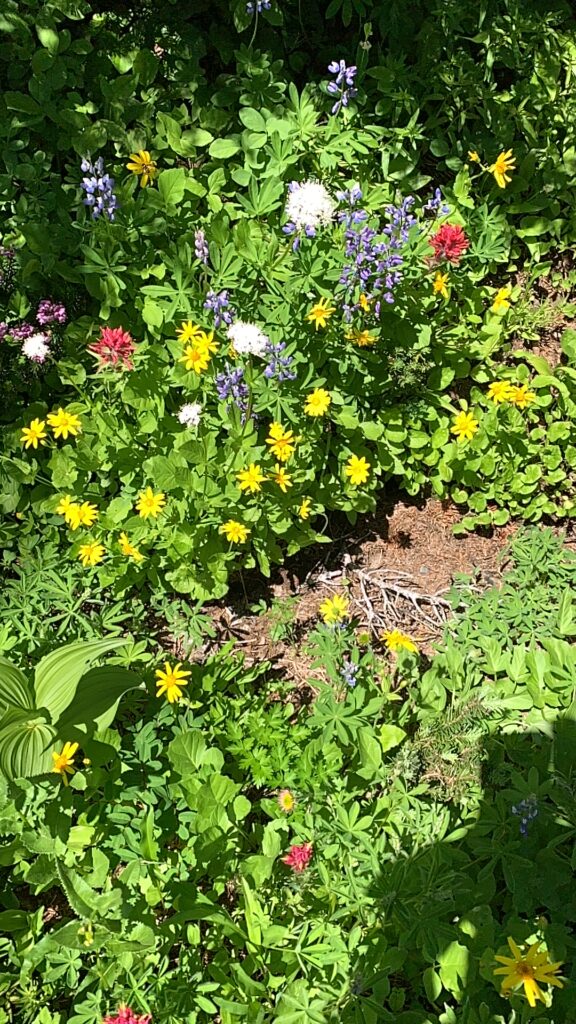
So beautiful as it is, Mt Rainier is deeply impacted by climate change